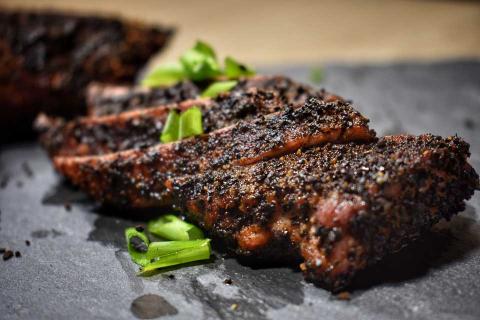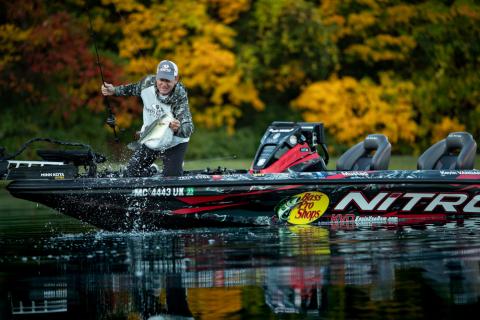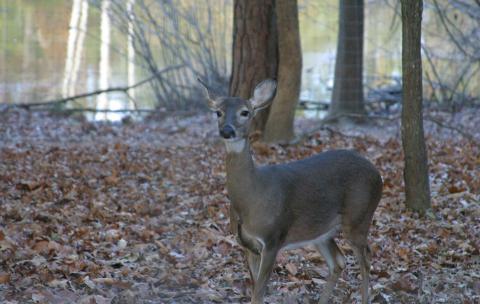Jeff Dennis | Originally published in GameKeepers: Farming for Wildlife Magazine
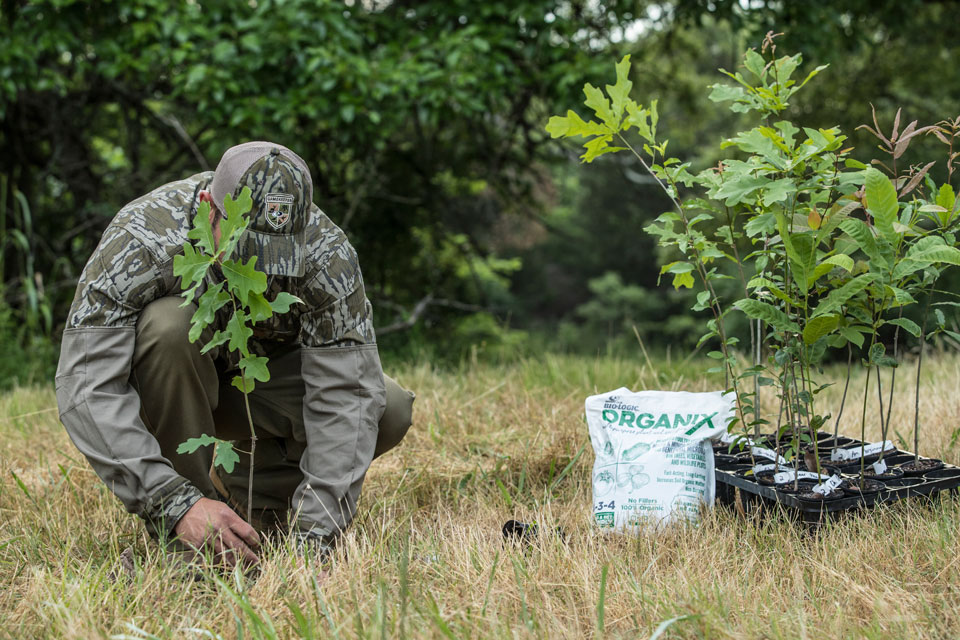
Most land managers interpret the phrase “farming for wildlife” solely as running a grain drill through the dirt and planting a crop. While in truth, habitat management on a long-term basis is just as important when it comes to the land’s carrying capacity for game animals. Planting perennial trees for an annual mast crop requires open space and a long-term management plan. However, these efforts can turn into what feels like a “free food plot” in successive years.
There is no free lunch in this world, right? Property owners who manage for game can tell you that everything costs more these days when it comes to planting. The seed costs more and the fertilizer costs a lot more. The diesel fuel going into the tractor is high and likely never to come down again, making multiple passes for disking or mowing costlier than just a few short years ago. If you wish to mow less and tackle unwanted growth with herbicides…now there’s a market where the price isn’t rising, it’s plain skyrocketing.
All these factors might cause managers to look at an acorn a little differently as it rests in the palm of their hand. Hard mast like acorns and soft mast like fruits can easily be planted by covering them with some dirt and then watching them grow. In many cases, land managers prefer to go with a seedling tree in order to get a quicker jump on future mast production, but the older the sapling the higher the cost at the nursery.
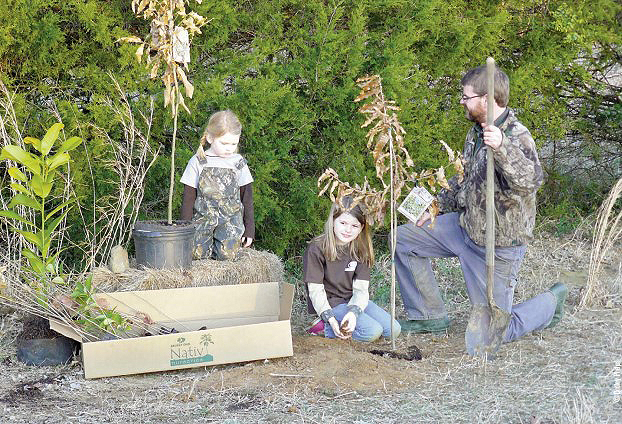
Management Plan and Mapping for Perennial Trees
Planting trees for wildlife in a haphazard fashion is fine, and most would figure that one more tree out in the woods producing mast is better than none. But too often those trees succumb to Mother Nature or are browsed or abused by wildlife and cease to exist, which can be a little frustrating. So it’s better to have a plan of action about how to proceed with any tree food plot plantings large enough to balance some mortality.
This starts with a visualization of what the landowner wants to occur on that property, which is often put down in writing as a management plan. When planting trees, that management plan needs to be supplemented by maps or sketches of where the trees will be installed and how they will integrate over time both, in that plot and with the terrain of the rest of the property.
Aerial photography, satellite images and topographical maps are modern tools that can greatly enhance the planning phase for tree plot layout. Most forestlands are wooded already, so some thought must be given to just where the mast trees will be planted. Timber harvesting creates openings both, where the wood is cut and at the logging decks. These can serve as tree plot hotspots. Natural occurrences such as a stand of dead trees from beetle infestation or storm damage can also create tree plot opportunities.
Keeping wildlife in mind after logging means to perhaps shun using a grid or typical rectangular clear-cut. Instead make the cut with irregular shapes to allow for more edge habitat. That opening can then be ringed with mast tree plantings, or they can be clustered all on one side, and it will take a trial and error process for managers to find what works best for them. In general, the more transition habitat in any forest means better home for many wildlife species.
GameKeepers are Record Keepers
Keeping a logbook of planting times and how each tree plot responds over time is often overlooked, but serious land managers keep records like accountants with a penchant for mathematics. These records can include everything from the problems encountered along the way, to which areas became heavily used by wildlife and when. Aldo Leopold is known as the father of modern day wildlife management, and it’s no coincidence that this gamekeeper was also a meticulous record keeper.
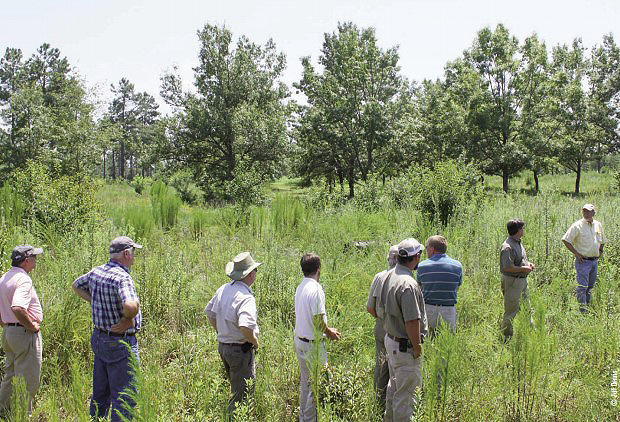
Mast, like acorns or walnuts, are really fruit with a hardened exterior, while soft mast from persimmons or crabapples is more like pulp with a tender covering. All of these differing mast products will not drop to the ground at the same time, so that is why recording this timeline of production can contribute to future planting where a succession of mast never really runs out in that area.
Another observation that will benefit hunters is which tree plot gets used the most by wildlife. In the end it is the wildlife that confirms to the managers what it is they like to eat. A lot of this has to do with taste (palatability), and differing soil types can greatly affect how mast actually tastes to animals. They will only consume some mast as a last resort after the more palatable offerings are gone.
Planting 1,200 Sawtooth Oaks
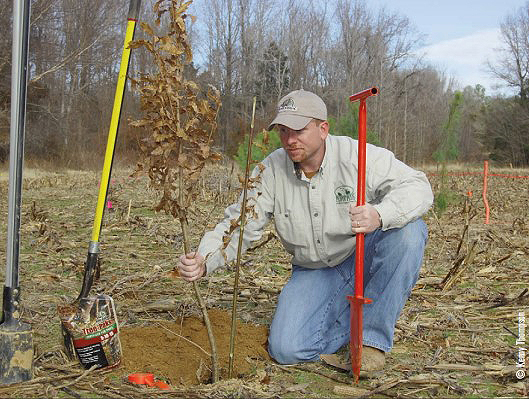
A property manager in Orangeburg County, South Carolina shared how making changes to the long-term management plan of a property led to a large tree plot planting. With an increased timber harvest, in order to create more open space for wildlife habitat, the property stepped away from timber management as the priority and stepped up efforts to provide better hunting in the future.
Back in 1994, manager Gary Davidson knew he needed to plant some sawtooth oaks and live oaks to enhance the property. “By chance I came across a nursery in Georgia that had a surplus of sawtooth oaks, and they were willing to make us a deal,” said Davidson. “If we came and dug up their nursery raised sawtooths, we could have them for a fire sale price.”
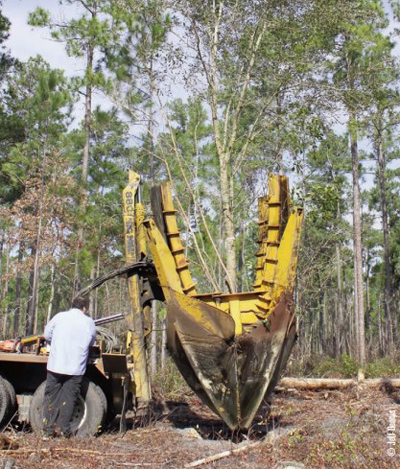
success.
“It was either travel to Georgia or simply order some acorns and start from scratch,” said Davidson. “Ends up I took five men with me and we came away with 1,200 sawtooth oak saplings. They had been planted tight which made them look like a patch of cane or reeds. Though some of them were approaching 10 feet tall the nursery shared that we could lop them off about four feet tall and they would re-sprout and grow from there.”
“We kept these seedlings on a bed of sawdust, so we could keep them moist during planting,” said Davidson. “Sawtooths are in the Cerris section (or group) and they yield a large nut in the early part of fall. The nut might be just a little too big for a turkey to swallow. These sawtooth trees began producing mast for us in just five to seven years, and they don’t skip a year of production like a pecan tree does.”
“During those formative years I fertilized the sawtooths to sweeten their mast and I pruned them as best I could,” said Davidson. “18 years later these trees are on their own now. The yield is so large that I don’t need to spend money on fertilizer or spend time pruning them for stand improvement. I find that a good wet summer like over the last couple of years can greatly enhance their mast yield too.”
“We have a soft mast crop from natural persimmon trees on the property, and they also produce in early fall,” said Davidson. “We rely on red oaks and water oaks to drop acorns late so that these food sources don’t ever run out.” Getting 1,200 seedlings planted is labor intensive, but Davidson’s take away message is they now have a reliable and natural mast crop each year, and that in today’s world of escalating costs the mast comes free of charge.
Up in the Air on Tree Spades
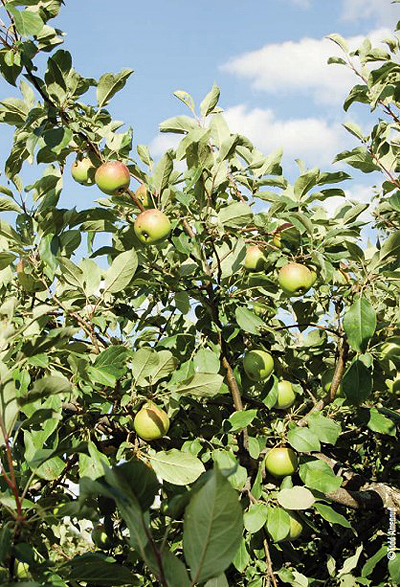
Due to an abundance of live oaks in one area where squirrels had operated unabated for years, we had a surplus of live oaks in an old garden area. I knew that live oak acorn production would hold greater value in the hunting woods rather than close to a road with dwellings on it, so I called for a tree spade to transplant a few live oaks. The concept of moving these trees is great, but the rigors of the actual exercise was cumbersome with only mixed results and less cash in my pocket as a result.
The first part of the tree spade equation is to locate and flag the areas where you would like to have that tree. In this case I wanted one in a log deck next to a hardwood bottom, one in an area that had been thinned next to an oak ridge, and one in a cutover area that happened to have easy access from a woods road. The tree spade will startoutatone of the flagged spots because they have to first dig the hole where the transplant tree is going.
As the four tree spade blades are pushed into the soil, it simultaneously sprays water down the blades to offer lubrication. Once the tree is lifted up, the tree spade can tilt it backwards so the vehicle can drive to the transplant location. As the tree is lowered into place, the tree spade again waters the area to give the root system a “wake up call” and help them to begin growing again.
The transplanting work does take some time, but it is a fairly straightforward process. However, I found out this does not guarantee success as it pertains to tree longevity. One tree immediately died from what I deduce was stress, since a smaller tree was actually transplanted in the same scoop and lived on just fine. At a later date the second tree was clipped by a careless herbicide application. The third tree is still surviving, but I’m not convinced it will have a long life, and I haven’t called for a tree spade since.



















